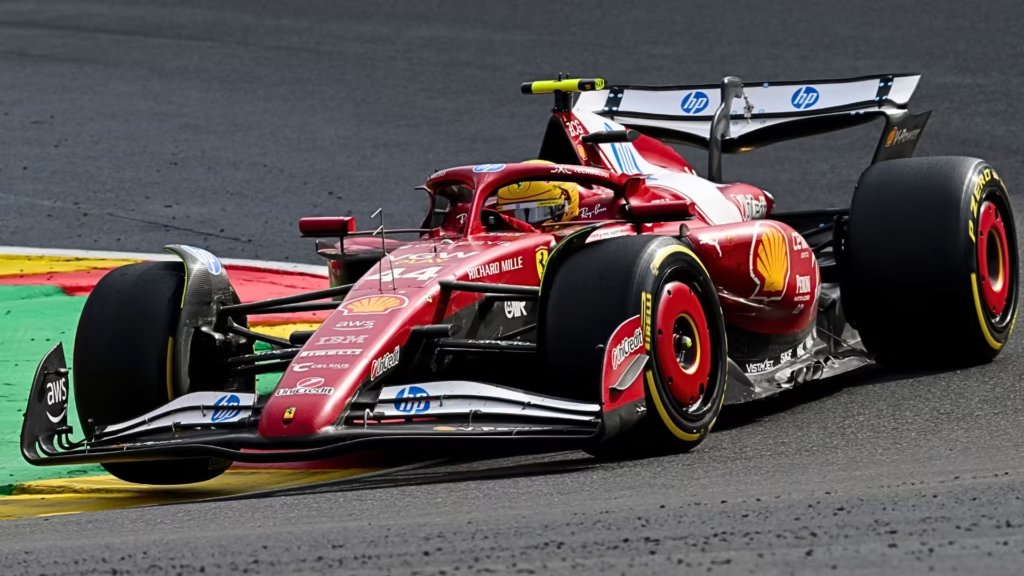
Lewis Hamilton’s weekend at the Belgian Grand Prix was one he’d prefer to forget, but there were encouraging signs despite the struggles. Driving Ferrari’s newly upgraded car, Hamilton faced setbacks early on, including a costly spin during Sprint Qualifying on Friday. He couldn’t recover in the Sprint race and then had his Grand Prix qualifying time deleted due to exceeding track limits, which forced an early exit from Q1.
Instead of starting from his original 16th place on the grid, Ferrari opted to begin the race from the pit lane. This decision allowed the team to make strategic adjustments, particularly switching to a higher-downforce rear wing in anticipation of rain. It was a tactical move aimed more at gathering valuable data than chasing a high result.
Throughout the race, Hamilton’s pace was inconsistent but hinted at potential. He managed to make up several positions and showed brief glimpses of competitiveness. While his performance didn’t deliver points or headlines, it offered Ferrari engineers a clearer understanding of how the upgrades were behaving under changing track conditions.
Hamilton himself acknowledged the mistakes made over the weekend, especially the track limits violation, calling it “unacceptable.” However, his ability to recover during the race and adapt to the car’s new configuration provided a silver lining. Ferrari is closely examining the data from Spa to refine their development path ahead of upcoming races.
In summary, while the results were disappointing on paper, there are signs of underlying progress in both Hamilton’s adaptability and Ferrari’s technical direction. With more fine-tuning and better execution, both driver and team believe that stronger performances are within reach soon. The weekend at Spa, although turbulent, may prove pivotal for Hamilton’s ongoing adaptation to life at Ferrari.
